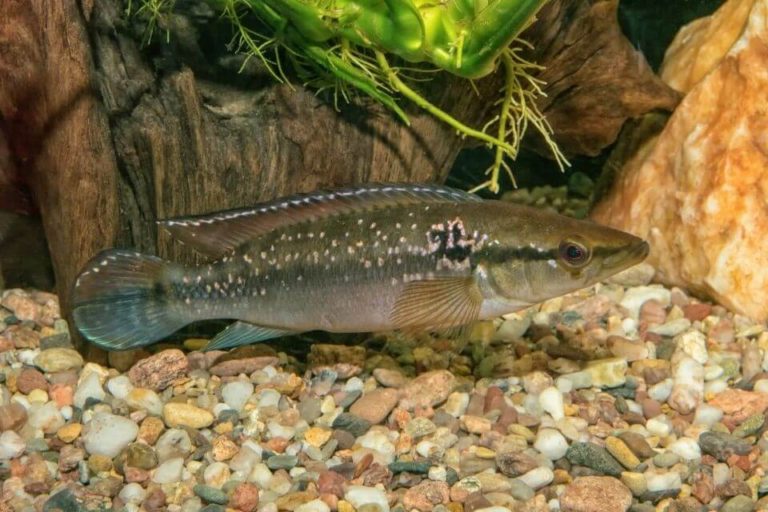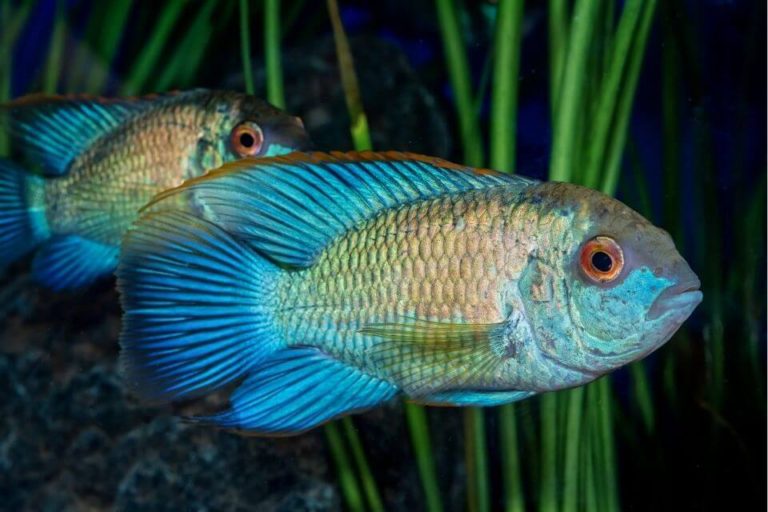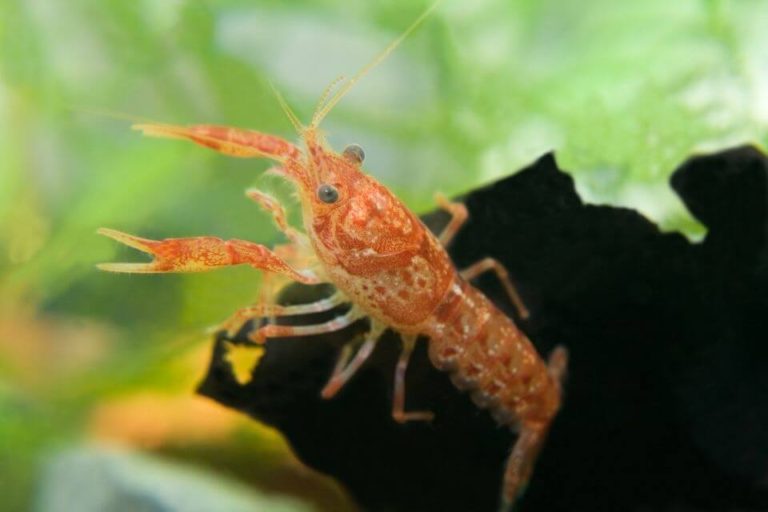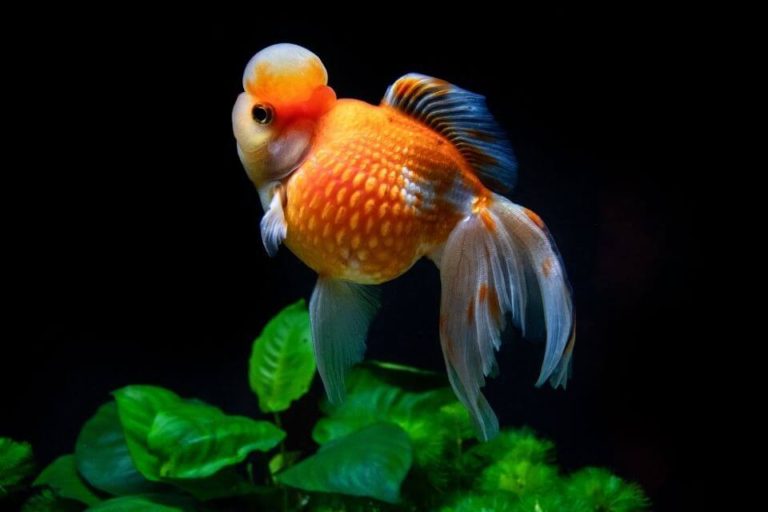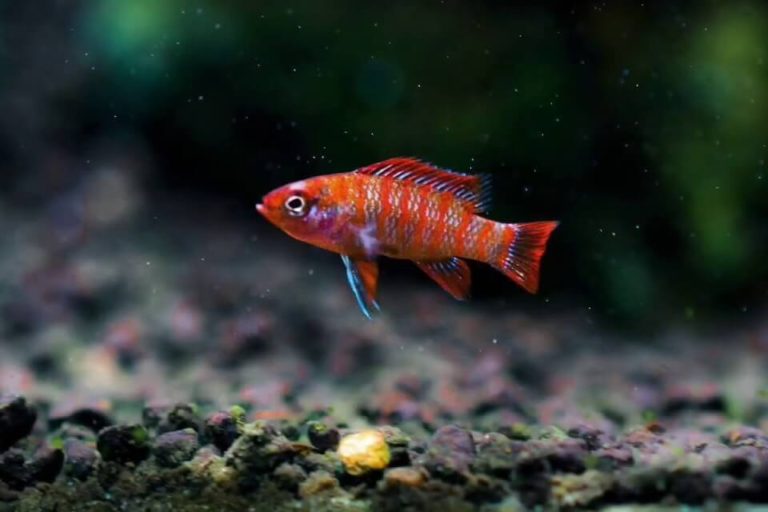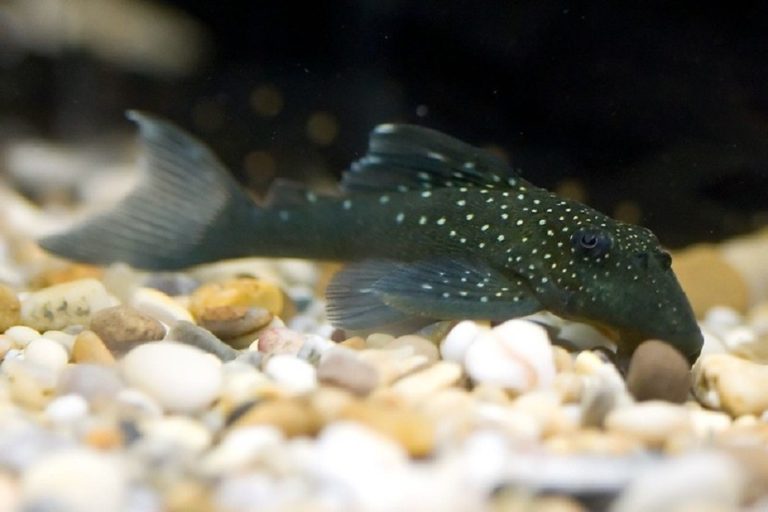Bala Shark Care Guide: Size, Lifespan, Feeding, Tank Mates & Tank Size

Bala Shark (AKA Silver Shark) is a beautiful fish that can make a colorful addition to your freshwater aquarium. If you are looking for some calming tank mates for your fish, this peaceful species can be the perfect match.
Experienced aquarium keepers will have an easy time with this species, but such an even-tempered fish is a good option for anyone willing to put in some time and care.
Below, you will find everything there is to know about the Bala Shark species and how to create the perfect habitat for them in your home or community aquarium. Follow these tips and specifications closely to ensure you are giving them the best of care.
| Quick Facts: | |
|---|---|
| Common Names | : Tricolor shark, Tricolor Sharkminnow, Silver shark, or Shark minnow |
| Scientific Name | : Balantiocheilos melanopterus |
| Family | : Cyprinidae |
| Origin | : Rivers of Cambodia, Thailand, and Malaysia |
| Care Level | : Easy to moderate |
| Lifespan | : Up to 10 years |
| Size | : 10 - 14 Inches (average 12 inches) |
| Diet | : Omnivore, pretty much eat all food |
| Breeding | : Egglayer |
| Social | : Active shoaling fish |
| Temperament | : Peaceful but eat small fish |
| Minimum Tank Size | : 120 gallons (150 gallons recomended) |
| Temperature | : 72 - 82 °F (22 - 28 °C) |
| Water Hardness | : 10 - 13 dGH |
| Water pH Level | : 6.5 - 8.0 |
Overview Of Bala Shark
It is native to Southeast Asia, this fish is a fast-swimming fish that can be found in the rivers of Cambodia, Thailand, and Malaysia. This fish is known as the “Gentle Giant” because it is large and not aggressive.
As shoaling fish, they thrive together in small communities. This fish species consider one of the freshwater sharks, but it is not a real shark. Despite their namesake, Bala Sharks are peaceful fish.
It gets its name from the shape of its dorsal fin, which is similar to that of a shark. Other than that detail, they could not be more different from those aggressive sea sharks.
This fish also goes by the nickname Silver Bala, Tricolor Shark, or Silver Shark.
Bala Shark Size
Bala Shark size can measure up to 13 inches (35 cm) long by the time they are an adult. The average Bala Shark size is about one foot (12 inches) long. In the case of most home aquariums, this size is too large for proper care.
We would recommend that you have a large aquarium set up so your fish do not outgrow their habitat. It is a must to have a Bala Shark tank size that holds at least 150 gallons of water for a group of 4.
Appearance and Colors
It is easy to identify this fish because of its unique characteristics. While most look the same, there can be some subtle color differences that make a school of Bala Sharks a beautiful sight to see.
It is a large freshwater fish with the body shaped like a torpedo with a long, thin body. It has dorsal, anal, pelvic, and caudal fins, making it look similar to a real shark.
While they do not act like sharks, they can give your freshwater tank some excitement and intrigue without hurting your other fish.
They are known for their huge eyes, which they use to spot and catch their prey in the wild. Their multiple fins make them fast swimmers. When well-fed, they can grow to be quite large.

Most Bala Sharks spot a silver gradient on their bodies with a black outline around their fins. The characteristic shark-shaped fins are a major identifier for this species.
Some are also having subtle yellow stripes on their fins or some yellow coloring on their bodies.
Typical Bala Shark Behavior
Bala Sharks are schooling fish. This means that they stay closely connected in the water, forming a strong social group. They may still swim independently but remain close enough to the group for their protection.
They are rarely found on their own, as they thrive together with other Bala Sharks. If you are considering this species or your aquarium, it is recommended that you have 4 to 6 Silver Sharks so they can form a social group.
To accommodate the above group of fish you have to invest in a large fish tank of at least 150 gallons other wise they will feel cramped in a tiny space.
Without the ability to live in a school, they risk their health and safety, making it much less likely to survive.
You must be prepared to handle a group of this species if you want to add this fish to your home aquarium. Since they are larger than most freshwater aquarium fish, they need to be fed more.
They can sometimes eat other tiny fish if they are small enough to fit in their mouth; however, this fish never causes trouble or attacks other fish. They get hungry often but they do not typically fight over food.
This species is very peaceful. In fact, they can be quite timid as they scare easily. The only time it is aggressive is when it is separated from other sharks, which is why you should always keep them in schools.
Although they are usually active, you might find your Bala Sharks hiding among plants or rocks until it is feeding time. It can take a few weeks for them to adjust to life in your tank before they stop hiding.
Once they are feeling more confident, you will notice them swimming quickly or even jumping when they are excited.
Silver Shark Care
Taking care of Silver Sharks can be easy after a while, but it is important to have the tank set up properly before you can begin caring for them.
Below, you will find everything you need to know about setting up the perfect tank, habitat, and conditions for your future school of Bala Sharks.
– Bals Shark Tank Size
When choosing a Bala Shark tank size, you must choose it while keeping in mind that this species is going to grow a lot. It is recommended that you start with a Bala Shark tank size of at least 40 to 50 gallons when your fish are still growing.
Eventually, you might want to invest in a Bals Shark tank size that is at least 150 gallons and over 5′ long. This fish needs a lot of room to swim around! Keep adjusting the size of your tank as they grow.
Your aquarium size will also determine how many Bala Sharks you can have at once. A good rule of thumb is to allow about 50 gallons per fish. Your 150 gallons tank could safely hold 3 to 4 fish.
Don’t forget to continue to increase the size of your tank as you acquire more fish.
– Bala Shark Tank Setup
In the wild, Bala Sharks are found in the fast-flowing rivers of Southeast Asia. It is a good idea to implement a good filtration system with a powerful filter that can emulate these waters.
Giving them a source of water that is constantly moving can help them feel more comfortable.
Preparing your tank for Bala Sharks is not too difficult, but keeping the right condition is imperative for their survival. To start off on the right track, your tank will need:
- Lighting: A freshwater aquarium lamp will suffice. Make sure it is on for at least 8-9 hours per day
- Aquarium lid: They love to jump, so keep a lid over your tank to keep them from getting out.
- Social support: This species survives in numbers – don’t just get one.
There are also size and water conditions to pay attention to. Make sure your Gentle Giants are getting all of the space and comfort that they need!
– What To Put In Your Fresh Water Tank
There are a variety of plants and substrate materials that will work great with this species. If you are a beginner, you can add some hardy plants and materials that don’t need a lot of maintenance. It is easy to set up a perfect habitat for Bala Sharks.
-
Substrate
When considering a good substrate for your aquarium, it is a good idea to think about your fish’s natural habitat.
While the bottom of the water can differ depending on what lake or river the Bala Shark is from, you’ll typically find a mix of pebbles, mud, and rocks to be the best substrate.
Bala Sharks will particularly love darkly-colored pebbles of different shapes and sizes as this best represents their natural habitat in the Southeast Asian rivers.
-
Props and Roots
Don’t put too much stuff on the bottom of your tank; Bala Sharks are active and need a lot of space to swim around. Too many obstacles on the aquarium floor could make them feel too cramped.
They also need some space to rest after they’ve had a burst of energy. Simple pebbles and roots with a height of 1cm will work just fine.
– Suitable Plants For Your Bala Shark Tank
Adding plants and other marine life can be beneficial for your fish. However, too many plants can get in the way of their swimming space, making them feel cramped and aggressive.
You can achieve a good balance by planting some plants around the edges of the tank, keeping the central area clear of anything tall.
Anubias is a popular aquarium plant for fish like Bala Sharks. With wide, flat leaves, it can be placed or planted on the bottom of any freshwater tank.
It is one of the most resilient aquarium plants as well, providing shelter for some and cleanliness for others. This is also a good plant choice for beginners as it is very hardy and requires little maintenance.
Java Moss and Crypts are also good plants for your aquarium that are suitable for beginners. You don’t need special kinds of lighting or particular substrate to start growing them right away.
– Water Conditions
Possibly the most important part of the tank to keep regulated for your fish is the condition of your water. Everything must be particular and precise in order for fish to thrive. If the water in your tank gets dirty or contaminated, it will start to suffer.
A strong water filtration system is absolutely necessary for all of your aquarium fish, but especially for Bala Sharks.
IMPORTANT: A strong water filtration system is absolutely necessary for all of your aquarium fish
-
Water Temperature
Like most freshwater fish, Bala Sharks thrive in warmer water temperatures. You should aim for about 72℉ to 82℉ (best at 77℉) when adjusting the temperature of your tank. Invest in an aquarium water heater to keep the water warm.
-
Water Hardness
A range of 10 to 13 dGH (degrees of general hardness) is fine for this species. These Silver Sharks will do okay with even water hardness if they have to, but you should still try to keep it at a comfortable level.
-
Water Acidity
A balanced acidity level is important for the survival of sensitive fish like Bala Sharks. The acidity range should always be between 6.5 and 8 pH.
If the acidity level gets high, they could start to suffer from weakness and other health issues. When in doubt, keep your acidity level right around 7, which is neutral on the pH scale.
-
Water Testing
You’ll want to regularly test your water to make sure all of the above conditions are always being met. You can find good water testing kits and thermometers at any fish supply store or pet shop.
Bala Shark Diet And Feeding
There is a wide range of feeding options for this species. As omnivores, they eat both plant matter and smaller animals. You can feed them almost any kind of food that you would feed your other freshwater fish.
In the wild, a Bala Shark’s diet consists of:
- Crustaceans
- Algae
- Insects
- Larvae
- Plant leaves
- Worms
Most aquarium experts would recommend that you invest in a high-quality flake or pellet as the main source of food for your Bala Shark.
You might want to also provide a variety of different food sources to keep your fish enriched. On top of their main source of food, you can also give them treats such as:
- Vegetables
- Diced fruits
- Spinach
- Bloodworms
- Plankton
Since they can grow quite large, Bala Sharks need a lot of protein to survive. Encourage growth in your fish by providing them with plenty of different protein sources every day.
While they are still growing, you might want to consider giving them shrimp, which are very high in protein.
– Feeding Routine
Feed your Bala Sharks around 3 times a day. The food should be small to medium-sized amounts for each meal. It takes Silver Shark just a few minutes to eat their food.
You might want to watch them eat so you can monitor their habits and ensure that everyone is getting their share.
You do not need to worry about adding supplements or specialty foods to your aquarium. Bala Sharks can survive on many kinds of food. As long as they are fed regularly and with enough protein, they will stay in good health.
Common Diseases And Prevention
It should be easy to keep your Bala Sharks in good health. There are no common diseases or conditions related to this fish, but there are still some illnesses that you should be on the lookout for.
Infection
Fish can get bacterial or parasitic infections through unclean water. This causes them to display a symptom known as dropsy, making them swell up.
They may also be suffering from ich, which is another condition that causes them to rub up against objects constantly. It may appear as if they are itching themselves.
If your fish are displaying signs of an infection, you should reach out to a veterinarian for specialty treatment right away.
Prevention
The best way to keep your fish healthy and safe is to replace some of your tank water each week. The best practice is to replace between 25% – 35% of the water in your aquarium every week.
This way you can keep the water clean and make it easier for the filtration systems to do their work.
Healthy Bala Sharks in a clean and regulated environment can live up to 10 years, making them such a popular addition to any kind of freshwater aquarium.

Gender Differences
Almost any freshwater fish expert will tell you to determine the sex of your fish when you first acquire it. It can be difficult to figure out the sex of your fish, let alone any characteristics that separate the males and the females.
Not to mention Bala Sharks in captivity rarely breed, making determining their gender an even more impossible task. When raised on breeding farms, they reach reproductive age at around 3 years old. At this point, they are typically 5” long.
There are almost no indistinguishable features between male and female Bala Sharks that can be easily seen, but here are some small factors that might help:
- Males grow a little bit faster than females and tend to be larger than females their age when they are growing up.
- Females become more round and fuller than their male counterparts once they reach breeding age.
If you are looking to breed Bala Sharks, you might want to get them a tank of their own so they can have plenty of space for successful mating.
You’ll need one that is at least 65 gallons and kept at 77℉ at all times. You can place nets at the bottom of the tank to make it easier for your fish to spawn.
If you want to catch this with your own eyes, you should know that they typically spawn in the morning and the mating process lasts for several hours. You will see the female lay eggs and the male fertilize these eggs with milt.
Bala Shark Tank Mates
It is important for all of you must choose compatible Bala Shark tank mates. You need a peaceful harmony of life to provide a thriving underwater environment for your creatures. Bala Sharks get along with almost any fish that isn’t overly aggressive.
Aside from the same species, a good Bala Shark tank mates include:
- Blood Parrot Cichlid
- Clown Loach
- Rubber Lip Pleco
- Blue Phantom Pleco
- Royal Pleco
- Kissing Gourami
- Kuhli Loach
- Black Ghost Knife Fish
- Dojo Loach
When first introducing your Bala Sharks to the tank, you might want to keep them fairly alone. Eventually, you can diversify your aquarium more and more as you add different varieties of species to the environment.
Do not add small or carnivorous species to your aquarium with Bala Sharks! This includes Neon Tetras, large Cichlids, and Shrimps. Peaceful medium and large-sized fish will do just fine.
Origin And Distribution
Silver Sharks originate in Borneo, Sumatra, and the Malay Peninsula, where they can still be found swimming in shallow waters. They are distributed through the system of rivers in Southeast Asia and sold across the globe for people to have in freshwater aquariums.
Due to recent contamination of their natural environments, Silver Sharks populations are on the decline. In 1996, the IUCN declared wild Bala Sharks to be an endangered species. In some of their original natural habitats, they are completely extinct.
Currently, they thrive better in aquariums and breeding farms than they do in the wild. Silver Sharks need ample space to swim and breed, surviving well in medium to large-sized aquariums. You will find them available in most pet stores that sell fish.
Are Bala Sharks Aggressive?
Bala Sharks are some of the most peaceful freshwater fish you can have in your tank. Silver Sharks only become aggressive if they are separated from the rest of their kind.
They might also eat tiny fish that are swimming in your tank, especially if they are the size of shrimp or minnows. However, they can get along with almost every other freshwater fish as long as they are well-fed.
Silver Shark is very active and they love to swim around the perimeters of the tank. They can sometimes swim fast and jump out of the water – so be sure to put a lid on your aquarium!
Are Bala Sharks Fin Nippers?
They are not Fin Nippers. Most fish who engage in fin nipping do so because they cannot see very well, so they rely on nips to tell them about their surroundings.
Bala Sharks have large eyes and very good vision, making it easy for them to observe the tank without having to lash out. Most of the time, they would rather ignore other fish in your tank than nip at them.
You most likely will not find Silver Sharks nipping at others’ fins.
How Many Bala Sharks Should Be Kept Together?
As shoaling fish, they may remain in small groups. The amount of Bala Sharks you obtain should directly correlate with your tank size, but you should also get a tank size large enough to accommodate at least 4 fish.
The ideal number of Bala Sharks for your tank should be 4-6 to keep them happy and comfortable. As social fish, they will thrive in a group and even possess more peaceful qualities.
Should You Keep Bala Sharks In Your Aquarium?
The Bala Shark is a great addition to your peaceful freshwater aquarium. Whether you are an experienced aquarist or a beginner looking to add some colorful fish to your home, you will find the Bala Shark to be an easygoing option.
They can grow to be about one foot long and are considered to be large freshwater fish. They need plenty of space to swim around, as well as clean water and regular feedings.
As long as you keep them together in a small group, they shouldn’t have any additional maintenance requirements and you can enjoy watching them get along with all the other fish in your tank.
If you are looking to diversify your aquarium and add a larger fish species to your collection of underwater life, you’ll find it easy to find and care for beautiful Bala Sharks.


